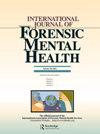在高风险风险评估中考虑土著人民
IF 0.9
4区 医学
Q3 CRIMINOLOGY & PENOLOGY
International Journal of Forensic Mental Health
Pub Date : 2020-11-06
DOI:10.1080/14999013.2020.1842563
引用次数: 1
摘要
摘要虽然土著人民只占加拿大人口的一小部分,但他们在加拿大刑事司法系统中的比例过高。研究和判例法表明,在暴力风险评估中应始终考虑文化,但尚不清楚是否遵循了这一建议。本研究考察了土著文化与非土著文化在根据加拿大法律在危险罪犯和长期罪犯听证会上就评估人员的VRA和专家证人证词发表司法意见中的作用。通过加拿大法律信息研究所数据库,系统地确定了2009-2016年期间法官对提交给法院的VRA发表评论的214次DO/LTO听证会。对土著和非土著被告案件的司法评论进行了分析,以讨论文化和评论的普遍性,包括评估人员的素质、完成的VRA的素质以及评估人员关于VRA的专家证词的素质。在64%的土著罪犯案件中,法官认为文化有意义。在非土著案件中,对VRA工具内容的讨论要频繁得多;除此之外,非文化主题的频率在不同病例组之间并没有差异。鉴于在VRA中考虑文化的重要性,令人担忧的是,在略高于一半的情况下考虑了文化;讨论了改善这一赤字的问题。本文章由计算机程序翻译,如有差异,请以英文原文为准。
The Consideration of Indigenous Peoples in High Stakes Evaluations of Risk
Abstract While Indigenous peoples account for a small portion of the Canadian population, they are overrepresented in the Canadian Criminal Justice System. Research and case law suggest culture should always be considered in violence risk assessments (VRAs), but it is unknown whether this recommendation is followed. The present study examined the role of Indigenous versus non-Indigenous culture in judicial opinions regarding evaluators’ VRA and expert witness testimony in Dangerous Offender and Long-Term Offender (DO/LTO) hearings under Canadian Law. 214 DO/LTO hearings from 2009-2016 where judges commented on VRAs submitted to the court were systematically identified via the Canadian Legal Information Institute database. Judicial comments were analyzed in cases with Indigenous and non-Indigenous defendants for discussions of culture and the prevalence of comments regarding qualities of the evaluator(s), qualities of the VRA(s) completed, and qualities of the evaluators’ expert testimony about the VRA. Judges considered culture meaningfully in 64% of Indigenous offenders’ cases. Discussion of VRA tools’ content was significantly more frequent in non-Indigenous cases; otherwise, frequency of non-cultural themes did not vary between case groups. Given the importance of considering culture in VRA, it is concerning that culture was considered in just over half of cases; improving this deficit is discussed.
求助全文
通过发布文献求助,成功后即可免费获取论文全文。
去求助

 求助内容:
求助内容: 应助结果提醒方式:
应助结果提醒方式:


